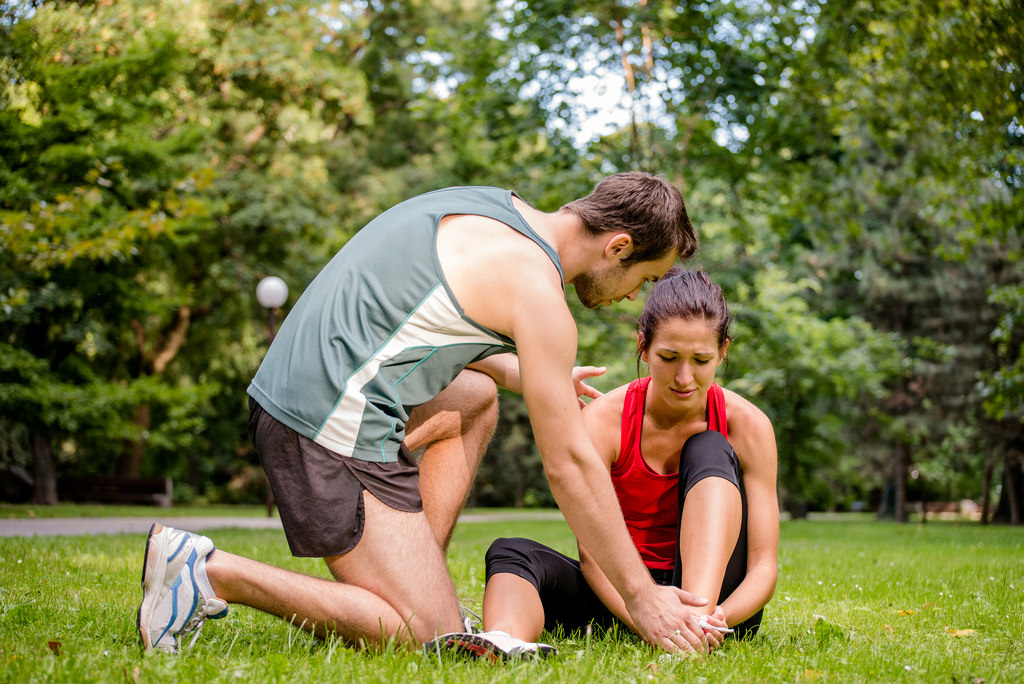<p>For active sports participants, nothing is more frustrating than suffering an injury that prevents further training. After working hard to gain peak physical condition, it can be a daunting task to lose it all and be forced to start from the beginning. Depending on the body part that is injured, there are a number of alternate exercises that can be conducted to train the rest of the muscle groups.</p>
<h4>1) Doctor/Physical Therapist Checkup</h4>
<p>Check with a doctor or physical therapist first off. Let them diagnose the injured body part first. They can suggest a proper rehabilitation program to follow and dissuade from stimulation of particular muscle groups.</p>
<h4>2) Exercises to Conduct When an Injury Occurs to Any Upper Body Muscle (biceps, triceps, shoulders, chest)</h4>
<p>Injury to the upper body restricts one to work on their lower body (primarily legs). This allows for a significant boost in cardiovascular exercises including elliptical, treadmill, and biking. Many people neglect their legs because it is not clearly visible to the world to see. However, it is responsible for more than half of the body’s weight.</p>
<p>So converting fat in the legs to muscle fibers can cause a significant reduction in body weight. Injuries to any upper body group make it risky to work the other upper body parts. For instance, if an injury occurs to the biceps it is still dangerous to work out the triceps or back. Shoulders and back are the most interconnected body part, so damage to one of these muscles can make it risky to do any upper body exercise or strenuous leg exercises (such as squats).</p>
<h4>3) Exercises to Conduct When an Injury Occurs to Any Lower Body Muscle (quadriceps, calves, glutes)</h4>
<p>Most people tend to agree that a lower body injury is the more frustrating of the two. Cardiovascular exercise becomes tougher because these tend to require accelerated movement in order to speed up the heart rate. This leaves the upper body as the primary muscle group to exercise. Make sure workout exercises do not engage the injured body part.</p>
<p>With any leg injury, make it a rule of thumb to sit on a bench or workout mat when completing the upper body workout. Back is always a risky muscle to exercise during a leg injury because upper legs are often utilized in the workout.</p>
<h4>4) Alter Your Diet</h4>
<p>Following an injury, one must keep in mind that fewer calories will be burned. So in addition to cardio, it is necessary to reduce the amount of calorie intake. Reduce the number of carbohydrates and fatty calories and aim to include more proteins in the diet.</p>
<h4>5) Rehabbing the Injured Body Part</h4>
<p>After the worst stage of the injury is gone, rehabilitation begins to repair the muscle. A key note is to utilize light weights. You do not want to cause additional damage to the muscle fiber. Stick to maintaining proper form and perform multiple repetitions. During rehabilitation, it is best to conduct 15-20 repetitions of each exercise. Always maintain a log to track the progress of the recovery, while noting the differences in strength and proper form.</p>
<h5>Featured images:</h5>
<p><span class="license">License: Creative Commons</span> <span class="source">image source</span></p>
<p>This article was written by Justin D&#8217;Souza, a professional writer for Rejuve Health Clinics, Orlando&#8217;s Premiere Testosterone Replacement Therapy. As an athlete his entire life, Justin knows the importance of staying healthy and in shape.</p>

How To Maintain Your Workouts After An Injury
